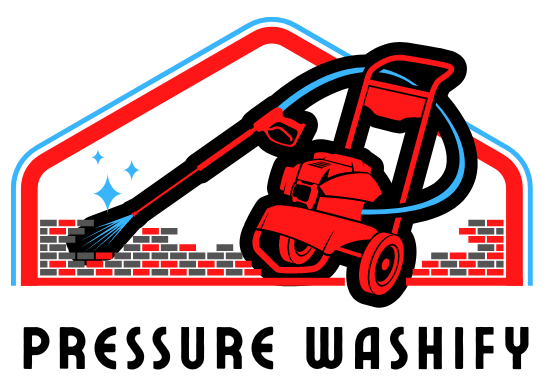Affiliate Disclaimer: This post may contain affiliate links, meaning we get a commission if you decide to make a purchase through our links, at no extra cost to you.
Winter is knocking at our doors, and it’s time to prep your electric pressure washer for the cold days ahead. But why is it so important, you ask? Well, in a nutshell:
To winterize your electric pressure washer: Drain the water reservoir, flush the system with antifreeze, clear hose lines, clean filters and nozzles, and store in a protected area.
As simple as that may sound, there’s actually a lot more to it than meets the eye. Without proper winterizing, important components of your pressure washer may freeze, causing damage that could set you back or even force you to retire your beloved washer.
To ensure all bases are covered and your pressure washer is utterly safe during winter, we’ve prepared a comprehensive guide with a well-detailed, step-by-step process.
Why Winterize Your Electric Pressure Washer?
The Hidden Ice Threat
Winter isn’t all about snowmen and snuggly blankets, it’s a tough time for our outdoor equipment. When you let your electric pressure washer hibernate in your garage without proper winterization, the remaining water can freeze, expand, and cause serious damage. That’s a repair bill none of us want.
The Cost of Neglect
Ignoring the simple step of winterization can cost you more than just your peace of mind. Damaged parts can be expensive to repair, or even worse, you might need to spring for an entirely new machine. Now consider the minimal cost of winterization. Obviously, an ounce of prevention beats a pound of cure!
The Joy of Spring Cleaning

Who doesn’t love the feeling of being all set to cleanse winter away with your trusty pressure washer once spring arrives? Preserving the life of your machine means you’ll have a ready buddy to freshen up your driveway, patio, or deck at the first sign of spring.
Tools and Materials Needed for Winterization
Winterizing your electric pressure washer doesn’t call for a trip to a fancy equipment store. Most of the necessary things can be found right at home or at your local hardware store. Here’s what you’ll need:
- Pressure Washer Pump Saver (Antifreeze Solution): This unique solution will protect your pressure washer against freezing temperatures and rust. Plus, it helps maintain seals and pistons when your washer is not in use.
- Clean Towels: To wipe down your pressure washer for winter storage.
- A Dry, Safe Storage Place: Make sure it’s a place safe from freezing temperatures and where the washer can avoid any potential damage.
The list seems short, right? It is! Winterizing your electric pressure washer is a simple process that doesn’t need complicated tools or materials.
Step-by-Step Guide to Winterizing Your Electric Pressure Washer
Alright, folks! Now that you’re prepped with the necessary tools and materials, it’s time to get your hands dirty and dive right into the process. Roll up your sleeves and let’s winterize your electric pressure washer.
Step 1: Drain the Reservoir
Start by making sure there’s no remaining detergent in the pressure washer’s reservoir. Any leftover cleaning solution can cause damage if left through the winter, so ensure it’s thoroughly cleaned out.
Step 2: Rinse the System with Antifreeze
Next, connect your pressure washer to water and run it in the lowest pressure setting for a few minutes. This will flush out any remaining detergent.
Then, disconnect the water supply and attach the antifreeze (Pump Saver), allowing it to cycle through the system.
A good antifreeze product like the STA-BIL Pump Protector safeguards your pressure washer pumps and other internal components during storage, ensuring a smooth startup when you’re ready to use it again.
What sets this product apart is its dual action as both antifreeze and lubricant. It connects effortlessly to your pressure washer and sprays a protective foam, effectively preventing the water line from freezing in colder temperatures.
Step 3: Clear Out Plumbing and Hose Lines
Remove any air and water from the hose, spray gun, and pump. Starting with the pressure hose, disconnect it from the pump and spray gun, and then blow air through the pressure hose to make sure it’s completely free of water.
Step 4: Clean Filters
Now, it’s time to clean all the filters of your pressure washer. Remove and thoroughly rid them of any debris to avoid potential damage.
Step 5: Clean Nozzles
Just like filters, your nozzles need cleaning too! Use a needle or small piece of wire to clear any possible obstruction in the pressure washer nozzles.
Step 6: Protect from Surrounding Factors
Cover your pressure washer with a protective cover to shield it from dust and other external elements. It’s an easy way to keep it clean and free from any undue stressors.
Step 7: Store Properly
Store your spruced-up pressure washer in a safe and dry place, safe from freezing temperatures.
Watch this excellent and easy-to-follow video by “Baily Line Road” to learn the steps involved.
Additional Tips and Suggestions
A couple of additional precautions could lead to improved performance and an even longer life for your power-packed companion.
Be Gentle
Even if your pressure washer is built tough, it doesn’t mean you should be harsh with it. When winterizing, take it slow and easy. Especially when clearing the nozzles, be gentle to avoid any unwanted damage or dislodging.
Go for Routine Maintenance
Don’t limit your maintenance to winter prep; make it routine. Regularly performing a basic cleaning, checking for any damage, and addressing minor issues will keep your washer in top shape all year round.
Antifreeze – Not Just for Winter
Your antifreeze solution (Pump Saver) is not just a winter friend; it’s useful throughout the year. Use it whenever you plan on not using your pressure washer for an extended period.
Guard those Hoses!
While storing, ensure that the hoses are not kinked or bent. Ideally, they should be coiled loosely and stored flat. Use a high-quality hose hanger to avoid kinks and damage to your hose during storage.
Heavy Duty Hose Hanger

- Durable Material
- Rust Proof
- Easy Installation
- Kink Protection
Don’t Forget a Spring Check-up
Upon winter’s exit, give your pressure washer a spring check-up before you start using it. Make sure everything is well-lubricated and working as it should.
Frequently Asked Questions
Q1: Can I use regular car antifreeze instead of Pump Saver?
A: Using automotive antifreeze isn’t a recommended practice. Pressure washer antifreeze (Pump Saver) is specially formulated to lubricate seals and pistons as well as prevent rusting, which car antifreeze may not provide.
Q2: What can I do if water has already frozen inside my pressure washer?
A: Try moving your pressure washer to a warm place to thaw the ice. Avoid the temptation to start the washer or force the frozen parts to prevent any damage. Once thawed, follow the winterization process mentioned in the blog post.
Q3: Is it okay to leave my pressure washer outside if it’s covered?
A: Storing your pressure washer outside, even covered, can expose it to unnecessary risk of freezing or damage from the elements. It’s best to store it in a dry, indoor area free from freezing temperatures.
Q4: Will a heated garage be safe enough for winter storage?
A: If your garage stays warm enough to prevent freezing temperatures in winter, it could be used as a storage place for your pressure washer. Regardless, the washer should still be winterized in case the heat fails during very cold snaps.
Q5: How often should I check on my pressure washer during winter?
A: Check on your pressure washer periodically during the winter, especially after particularly cold stretches. Look for signs of freezing or other potential issues. A quick regular check can help prevent long-term damage.
Q6: If I didn’t use my pressure washer during a particular season, should it still be winterized?
A: Yes, even if your pressure washer wasn’t used, it should still be winterized. Dust, moisture, and idle time can potentially damage parts of your pressure washer.










